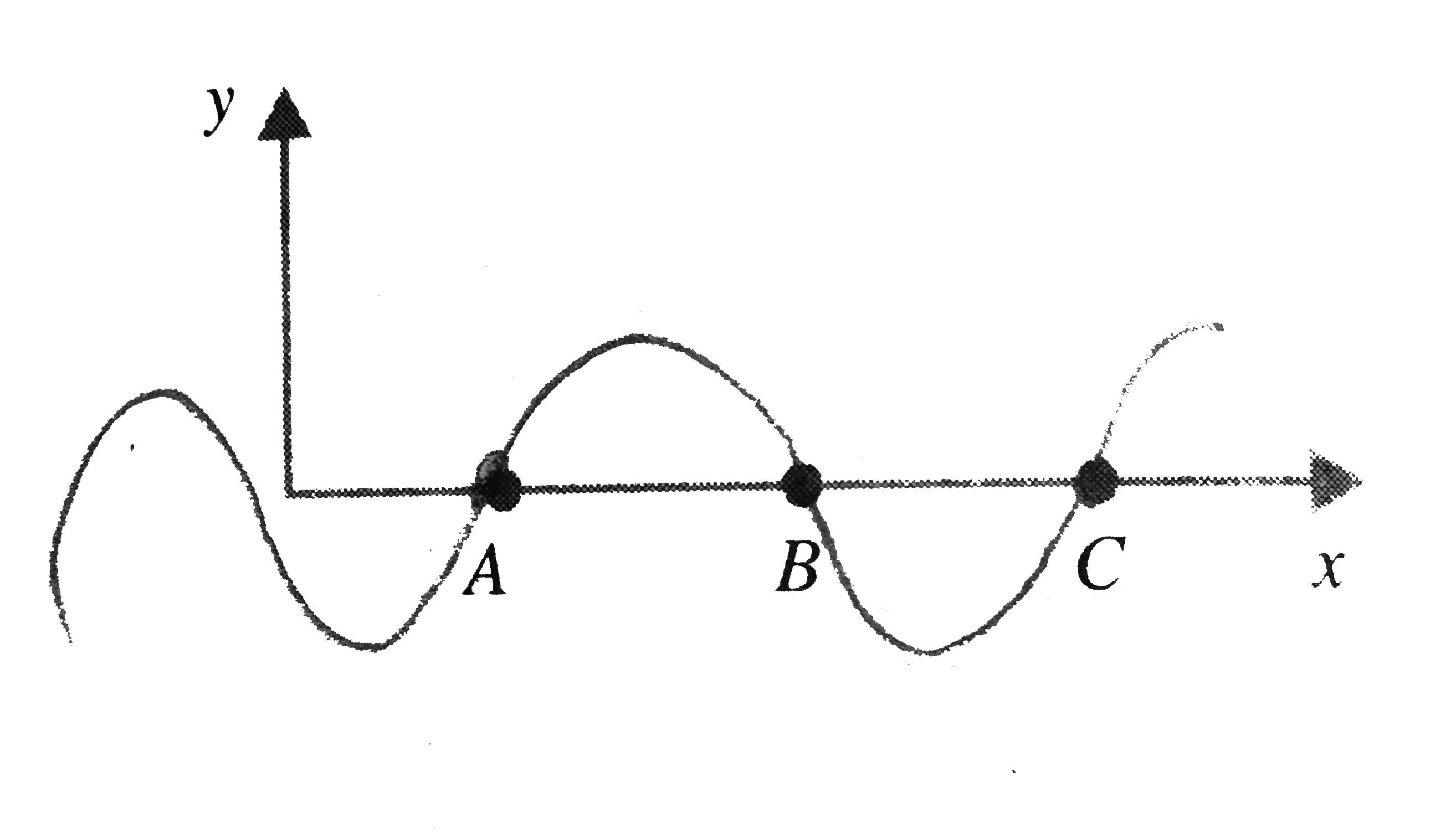P,Q and R are three particle of a medium which lie on the x-axis. A sin wave of wavelength λ is travelling through the medium in the x-direction. P and Q always have the same speed. Whilem P and R always have the same velocity. The minimum distance between :-
P and Q is λ2
PandQislambda
PandRis(lambda)/(2)
PandRislambda
The correct Answer is:A, D
From the situation it is clear that particlesP and Q are in opposite phase so there path difference must be odd multiple of halfthe wavelength and particles P and R are in same phase so there path difference must be a multiple of wavelength hence option (A) and (D) are correct.
Topper's Solved these Questions
- WAVES BOOK - PHYSICS GALAXY - ASHISH ARORACHAPTER - WAVES EXERCISE - Unsolved Numerical Problems for Preparation of NSE, INPhO & IPhO
135 Videos
- WAVES BOOK - PHYSICS GALAXY - ASHISH ARORACHAPTER - WAVES EXERCISE - Numerical MCQs Single Options Correct
90 Videos
- WAVE OPTICSBOOK - PHYSICS GALAXY - ASHISH ARORACHAPTER - WAVE OPTICSEXERCISE - Unsolved Numerical Problems
28 Videos
- X-RAYSBOOK - PHYSICS GALAXY - ASHISH ARORACHAPTER - X-RAYSEXERCISE - Unsolved Numerica Problem for Preparation
23 Videos
Similar Questions
P, Q and R are three particles of a medium which lie on the x-axis. A sine wave of wavelength λ is travelling through the medium in the x-direction. P and Q always have the same speed, while P and R always have the same velocity.
The minimum distance between –
(1) P and Q is λ
(2) P and Q is λ/2
(3) P and R is λ/2
(4) P and R is λ
View SolutionA,B and C are the three particles of a medium which are equally sparated and lie along the x-axis. When a sinusoidal transverse wave of wavelength k propagates along the x-axix, the following observation are made:
(i) A and B have the same speed. (ii) A and C have the same velocity.
Find (a) the minium distance between A and B and (b) the minimum distance between A and C.

View Solution
Knowledge Check
A sine wave of wavelength λ is travelling in a medium. The minimum distance between the two particles always having same speed is
Aλ4Bλ3Cλ2DλA sine wave of wavelength λ is travelling in a medium. The minimum distance between the two particles always having same speed is.
AλBλ2Cλ3Dλ4In sine wave , minimum distance between 2 particles always having same speed is
Aλ2Bλ4Cλ3Dλ
A sine wave is travelling ina medium. The minium distance between the two particles, always having same speed is
View SolutionTwo poles are placed at P and Q on either side of a road such that the line joining P and Q is perpendicular to the length of the road. A person moves x metre away from P parallel to the road and places another pole at R. Then the person moves further x metre in the same direction and turns and moves a distance y metre away from the road perpendicularly, where he finds himself, Q and R on the same line. The distance between P and Q (i.e., the width of the road) in metre is
View SolutionIn sine wave , minimum distance between 2 particles always having same speed is
View SolutionGiven three points P,Q,R with P(5,3) and R lies on the x-axis. If equation of RQ is x−2y=2 and PQ is parallel to the x-axis, then the centroid of ΔPQR lies on the line:
View SolutionTwo particles P and Q describe simple harmonic motions of same period , same amplitude along the same line about the same equilibrium position O. When P and Q are on opposite sides of O at the same distance from O they have the same speed of 1.2m/s in the same direction, when their displacements are the same they have the same speed of 1.6m/s in opposite directions .The maximum velocity in m/s of either particle is
View Solution
